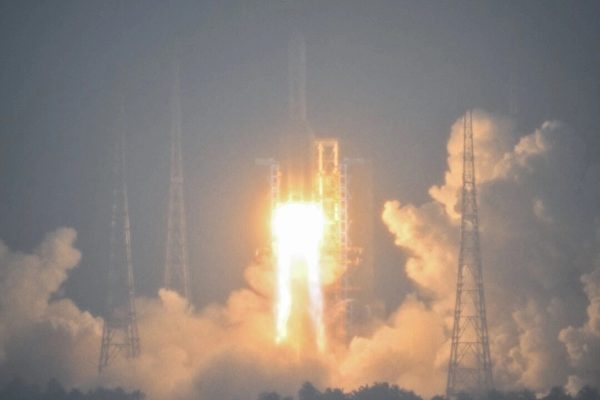China has achieved a breakthrough in its space strategy by deploying a massive satellite network that could target US troops in the event of a conflict in the Western Pacific. The head of intelligence for the US Space Force stated that few truly understand the rapid development of the People’s Liberation Army (PLA) in space.
Major General Gregory J. Gagnon, the Deputy Chief of Space Operations for Intelligence, expressed his concerns to the Mitchell Institute for Aerospace Studies on May 2nd, emphasizing the unprecedented speed at which the PLA can mobilize its forces using satellite networks.
Since the end of 2015, China’s on-orbit capability has increased by 550%, with significant implications for its space ambitions. The escalating military developments in space by China have become a major national security concern for the United States in recent years.
In April of this year, General Stephen Whiting, the commander of the US Space Command, issued a warning about China rapidly enhancing its space military capabilities. A US military report in January cautioned about China and Russia deploying dual-use satellites that conceal their military purposes.
Over the past two years, China has deployed over 200 satellites in space, with more than half of them being remote sensing satellites focused on surveillance and reconnaissance in the Western Pacific region and globally.
Major General Gagnon highlighted that through proliferated architecture, China has enhanced its space infrastructure’s resilience against potential attacks, indicating a shift towards a framework designed for combat and sustaining warfare rather than efficiency and cost-effectiveness.
Furthermore, China’s advancements in space intelligence gathering have eroded the US military’s longstanding monopoly on targeting long-range moving objects. The US’s superiority in space capabilities, ensuring its dominance, is now being challenged by China’s satellite fleet possessing similar capabilities.
The significant increase in China’s space capabilities has been attributed in large part to the theft of US intellectual property and decades of Western investment. Major General Gagnon also rebutted China’s claims regarding the intended agricultural uses of their radar satellites positioned in the Geostationary Earth Orbit (GEO).
The US Space Force was established in 2019, and since then, it has witnessed a surge in monitoring an increasing number of satellites in orbit. Currently, the Space Force coordinates the surveillance of approximately 1000 space priority targets out of the 9500 satellites orbiting in space.
Major General Gagnon noted a substantial increase in the issuance of exercise alerts by the Space Force, reaching around 11,000 per month, compared to 6-7 alerts at the establishment of the Space Force. These alerts are issued by the Guardians of the US Space Force and private sectors in eleven other countries.
The collaboration with the commercial sector has enabled the management of vast amounts of data in a joint database efficiently. By providing training to individuals from other countries on conducting Level-1 analysis, the Space Force aims to help enhance global space monitoring capabilities.
The continuous development of China’s space military capabilities underscores the evolving landscape of space security dynamics, challenging the longstanding dominance of the US in space affairs. The strategic implications of China’s satellite fleet expansion raise concerns for US military operations in the Pacific region, highlighting the need for continued vigilance and adaptation in response to emerging threats in space warfare.

